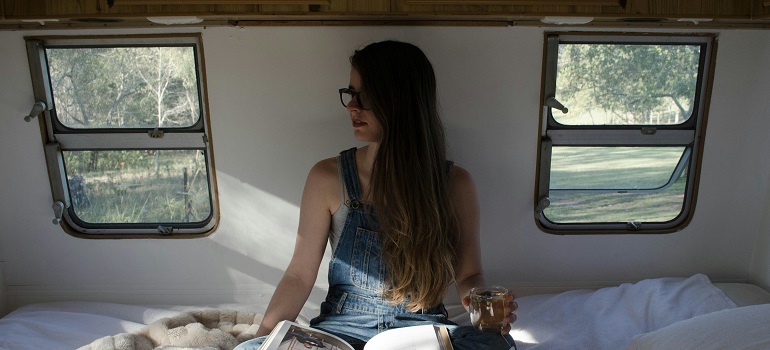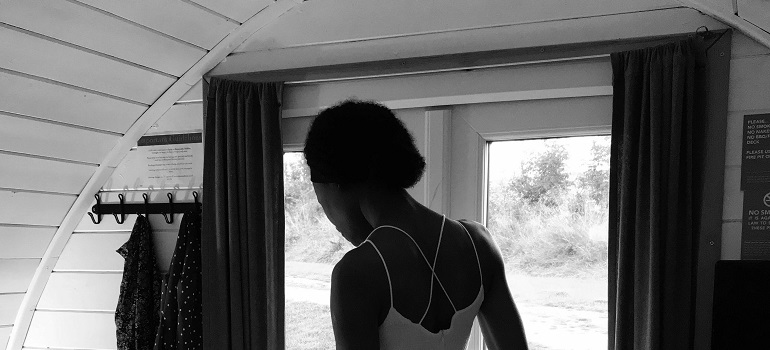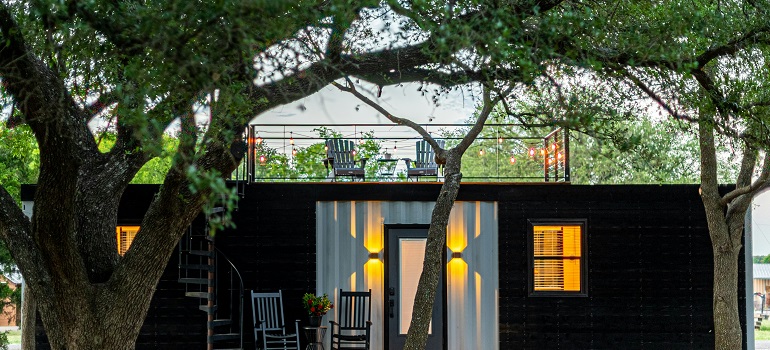Get Your Free Estimate Now
"*" indicates required fields
Tiny homes are becoming a popular choice in Toronto, appealing to those eager to embrace a simpler, more affordable lifestyle. This shift is driven by rising housing costs in the city, making tiny homes an attractive alternative. They offer the essentials of comfortable living in a compact space, promoting both financial savings and a decluttered life. Toronto, known for its diverse and dynamic urban environment, provides an ideal backdrop for tiny living. Here, the community of tiny home dwellers is growing, supported by a network of builders and enthusiasts who champion the minimalist lifestyle. Moving into a tiny home in Toronto could prove challenging and we can guide you through the nuances of adopting this innovative way of living. For those in need of a moving service in Toronto, there are plenty of options that specialize in small-scale moves.
Reducing belongings before moving
Preparing to move into a tiny home in Toronto requires thoughtful downsizing. The limited space in tiny homes demands that residents choose their possessions wisely. Start by evaluating your belongings based on necessity and frequency of use. Items that you haven’t used in a year are likely candidates for donation or sale. Organizing a garage sale or using online marketplaces can be effective ways to declutter while recouping some expenses.

For items with sentimental value, consider creative storage solutions or digitizing where possible. The goal is to create a space that feels open and uncluttered, which is crucial in a compact living environment. This process not only simplifies your move but also helps in adapting to the tiny home mindset, which favors simplicity over accumulation. For your moving needs, consider engaging a packing service in Toronto that offers specialized services for compact living spaces.
The various tiny home models available in Toronto
Toronto’s tiny home market is diverse, offering models for every lifestyle. If you prefer staying mobile, a portable tiny home gives you the freedom to explore different neighborhoods. Conversely, stationary models are perfect for setting deep roots in one area. Each type of tiny home requires specific considerations for Toronto’s unique urban environment. Key considerations and types:
- Stationary Tiny Homes: These require land purchase or lease agreements. They often sit on foundations like traditional homes. Ideal for those who wish stability.
- Portable Tiny Homes: Built on trailers, they offer mobility and flexibility. You must understand Toronto’s parking and mobility laws.
- Custom Tiny Homes: Tailor your home to fit personal needs. Options include expandable sections or rooftop terraces.
- Prefab Tiny Homes: These are cost-effective and quick to set up. They come in various designs and sizes.
- Eco-Friendly Models: Some homes feature solar panels or rainwater harvesting systems. They appeal to environmentally conscious residents.
- Tiny Home Condos: A new trend where tiny homes are stacked vertically. This maximizes urban space use.
- Luxury Tiny Homes: High-end finishes and appliances. They maximize comfort in a small space.
- Conversion Models: Old structures like shipping containers transformed into livable spaces. They are budget-friendly and creative.
Choosing the right tiny home in Toronto involves more than just personal style. Consider local zoning laws that dictate where you can park or place your home. This impacts both portable and stationary models. Additionally, community integration is vital. Many tiny home owners find communities with shared values. Researching these aspects helps ensure your tiny home experience is successful. Join local forums or groups to gain insights and make informed decisions. For those considering a more nomadic lifestyle, small movers in Toronto can provide tailored services.
Maximize space when moving into a tiny home in Toronto
When moving into a tiny home in Toronto, efficient packing is essential. Start by selecting furniture that is versatile and space-saving. Items like murphy beds, which can be stowed away when not in use, or expandable dining tables offer functionality without occupying permanent space. Consider appliances that are designed for small spaces, such as compact dishwashers or combination washer-dryers. These appliances perform their functions efficiently while fitting into the limited spaces typical of tiny homes.

Additionally, think about the layout of your tiny home and plan your packing accordingly. Using vacuum-seal bags for clothing, for example, can reduce the volume of your soft items, freeing up storage for other essentials. This strategic approach to packing not only eases the move but also helps maintain an organized and spacious interior once you settle in. For additional moving and packing resources, moving and storage Canada services offer a range of options to suit your needs.
Make limited space feel expansive
Designing a tiny home’s interior to feel spacious is key to comfortable living. Light colors, such as whites and pastels, can make the walls seem to recede, creating a sense of more space. Mirrors strategically placed can amplify this effect by reflecting light and views, further enhancing the openness of the room. Good lighting is also crucial; ample natural light can make any space feel airier. When natural light is not sufficient, installing varied light sources, such as under-cabinet lights or well-placed lamps, can brighten the space effectively.

Additionally, choosing furniture that doubles as storage can minimize clutter. For instance, ottomans with storage compartments or beds with drawers underneath provide hidden storage solutions that keep the living areas neat and visually uncluttered. Each design choice should aim to create a fluid, open interior that feels comfortable and inviting despite the compact square footage. For those looking for efficient moving solutions in smaller accommodations, condo movers in Toronto offer services that cater specifically to the unique challenges of condo and tiny home relocations.
The financial implications of moving into a tiny home in Toronto
Investing in a tiny home in Toronto is not just a lifestyle choice but a significant financial decision. The initial costs can vary widely depending on whether you opt for a custom-built tiny home or a pre-fabricated model. Custom builds allow for personalization but can be more expensive, while pre-fabricated models often offer a more cost-effective and quicker setup option. Regardless of the type, the overall cost is typically lower than that of traditional homes in Toronto, which can translate into substantial savings on mortgage payments.

Additionally, tiny homes often incur lower utility costs due to their smaller size and the potential for integrating sustainable technologies like solar panels. However, it’s important to budget carefully for the initial outlay, which should include the purchase price, land lease or purchase (if stationary), and any necessary customization. Planning for these expenses ensures that the transition to tiny living is financially sustainable. For personalized moving services that understand the nuances of tiny home transitions, consider residential movers in Toronto.
The social dynamics of tiny home communities
The community aspect is a significant part of the tiny home experience in Toronto. Many tiny home owners find themselves part of a close-knit community that shares similar values of minimalism and sustainability. These communities often organize regular events and meet-ups, providing a support network that can be invaluable for newcomers to tiny home living. Additionally, the shared spaces within these communities, such as gardens or communal kitchens, encourage interaction and foster a sense of belonging. For those new to Toronto, this can be an excellent way to meet people and integrate into the city’s social fabric.
Engaging with community leaders and attending community events can help you settle in and find your place within the tiny home community. This social integration not only enriches your living experience but also provides practical support as you navigate the unique aspects of tiny home living. To ease your move within the city, local movers in Toronto can provide knowledgeable and community-focused services.
Day-to-day life in a tiny home within the urban environment
Living in a tiny home in the city of Toronto offers a unique urban experience. Despite the smaller living space, the design and location of these homes can provide access to vibrant neighborhoods and the city’s diverse cultural offerings. Daily life in a tiny home involves not only adapting to smaller indoor spaces but also maximizing the city’s outdoor and communal spaces. Toronto’s parks, waterfront, and public areas become extensions of your living space. The compact nature of a tiny home also encourages a less cluttered lifestyle and more engagement with the surrounding community.

Residents often enjoy a more active lifestyle, utilizing local amenities and participating in city events. The environmental benefits, such as reduced energy use and less waste, align with the values of many Toronto residents, making tiny home living a fulfilling choice for those committed to sustainability. If you need to move large items or several pieces of furniture, furniture movers in Toronto can help ensure your belongings are transported safely and efficiently.
Strategies for outdoor space optimization
In Toronto, maximizing outdoor space is crucial for tiny home residents, enhancing both functionality and enjoyment. A well-designed outdoor area can serve as an extension of your living space, offering a blend of relaxation and utility. For instance, a compact balcony or deck can transform into a vibrant garden or a quaint dining area. This approach not only optimizes limited space but also enhances your living experience by integrating nature and fresh air into your daily routine. Innovative ideas for tiny home outdoor spaces:
- Foldable Furniture: Choose chairs and tables that fold away when not in use, saving space.
- Hanging Planters: Utilize vertical space for plants without sacrificing floor space.
- Retractable Awnings: Provide shade and weather protection; retract when not needed.
- Outdoor Lighting: Solar-powered lights add ambiance without increasing electricity costs.
- Modular Decking: Temporary decking can be moved or reconfigured as needed.
- Wall-mounted Barbecue Grills: Save space while enjoying outdoor cooking.
- Privacy Screens: Create a sense of seclusion with stylish partitions.
- Heated Outdoor Mats: Extend the usability of outdoor spaces into colder months.
- Outdoor Rugs: Define spaces and add comfort underfoot with weather-resistant rugs.
- Mirror Installations: Make spaces appear larger and more open.
To truly capitalize on these strategies, it’s essential to consider the specifics of your tiny home’s layout and the typical weather patterns in Toronto. For example, optimizing for sunlight exposure can make your outdoor area warmer and more inviting, especially during the cooler months. Additionally, incorporating native plants into your garden not only reduces maintenance but also supports local ecology. Engaging with community garden projects can also provide insights and resources for making the most of your outdoor spaces. When you need supplies for your move or outdoor space setup, moving supplies in Toronto can provide you with all the essentials.
Local laws affecting tiny homes
Navigating the regulations for tiny homes in Toronto can be challenging but is crucial for a smooth transition. The city has specific zoning laws that dictate where tiny homes can be located and how they must be constructed. For stationary tiny homes, understanding these zoning restrictions is essential to determine feasible locations within the city. Mobile tiny homes, while offering more flexibility, are subject to parking rules and mobility regulations. Engaging with local city planners and tiny home advocacy groups can provide guidance and up-to-date information on compliance.

Additionally, securing the right permits is a step that cannot be overlooked. This involves detailed planning and sometimes consultations with legal advisors who specialize in property law. Compliance ensures that your tiny home is not only a comfortable space but also a legal one, securing your investment and lifestyle in Toronto. For those moving downtown, movers in downtown Toronto can help navigate the urban environment efficiently.
Explore the perks of moving into a tiny home in Toronto
Transitioning to a tiny home in Toronto is more than just a change of address; it represents a shift towards a more sustainable and financially manageable lifestyle. The benefits of tiny living include lower living costs, less environmental impact, and a simpler, decluttered lifestyle. Additionally, the sense of community among tiny home dwellers in Toronto adds a valuable social dimension to this choice. If you value sustainability, community, and affordability, a tiny home could be a perfect fit. As Toronto continues to grow and evolve, tiny homes offer a unique way to live centrally and engage with the city in an intimate, integrated way. Whether you’re a long-time resident or new to the city, considering a tiny home could be the key to a refreshed, reinvigorated urban life.
Contact Us
Get access to a variety of moving and storage Canada solutions:

Contact Our team
Call Professional Movers Canada or fill out our free moving quote form.

Get Your Quote & Plan
Receive an obligation-free estimate and a detailed plan of action for your move.

Enjoy a Professional Move
Leave all the vexing tasks of relocation to our skilled Canada movers.